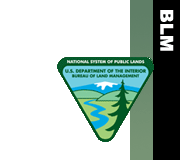|
Print Page | |||||||||
Mining Laws Mining Law AdministrationThis includes the General Mining Law of 1872, as amended; those portions of the Federal Land Policy and Management Act of 1976, as amended (FLPMA) that affect the General Mining Law; and the Surface Resources Act of 1955. See the brochure Mining Claims and Sites on Federal Lands. 1. Mining Claim Recordation and the Annual Maintenance FeeThis program area, established by section 314 of the FLPMA (43 USC 1744 and 43 CFR 3833) and amended by annual budget acts, concerns the location and recording of mining claims and sites, recording of title transfers to mining claims and sites, payment of annual fees and filings of annual assessment work documents, and deferments of assessment work. It also includes the adjudication of these required filings, fees, and transfers, and the issuance of decisions voiding out claims and sites that fail to comply with these requirements. The Bureau has on record (1998) approximately 290,000 mining claims Nationwide, including Alaska. The BLM's annual statistics for mining claims are published in the Public Land Statistics. 2. Mineral PatentsThe General Mining Law of 1872, as amended (30 USC 29 and 43 CFR 3860, provides the successful mining claimant the right to patent (acquire absolute title to the land) mining claims or sites if they meet the statutory requirements. To meet this requirement, the successful claimant must:
3. Surface Management ProgramThis program area concerns authorizing and permitting of mineral exploration, mining, and reclamation actions on the public lands administered by BLM. It is mandated by section 302(b) of FLPMA (43 USC 1732[b] and 603[c]; 43 CFR 3802 and 43 CFR 3809). All operations of any nature that disturb the surface of the mining claim or site require authorization. The necessary authorizations and permits are obtained through the proper BLM field office. The BLM regulations establish three levels of authorization, (1) casual use, (2) notice level, and (3) plans of operations. Casual use involves minor activity with hand tools, no explosives, and no mechanized earth moving equipment. No permit is required. Notice level activities involve use of explosives and/or earth moving equipment. The total annual unreclaimed surface disturbance must not exceed 5 acres per calendar year. A plan of operations is required for all other surface disturbance activities. A full environmental assessment and reclamation bonding are required. 4. Surface Use and OccupancyThis program area concerns the proper occupation (residency or seasonal occupation of mining claims by mining claimants. It is administered pursuant to the Surface Resources Act of 1955 (30 USC 611-615; 43 CFR 3715). It provides that if you live on a mining claim or site, the occupation must be justified as reasonably incident to mining and exploration and that no other reasonable options for shelter are available while working the claims. The occupation must be authorized by the proper field office through a notice or plan of operations. There are severe penalties for unauthorized residences and occupancies (see the regulations at 43 CFR 3715). 5. Valid and Existing Rights DeterminationsHolders of mining claims and sites located within lands later withdrawn from mineral entry must prove their right to continue to occupy and use the land for mining purposes. The owner must demonstrate they contain a discovery of a valuable mineral deposit and/or are used and occupied properly under the General Mining Law, as of the date of withdrawal and as of the date of the mineral examination. Mining claims or sites whose discovery or use or occupation cannot be demonstrated on the date of withdrawal or the date of mineral examination have no valid existing rights and will be contested by the Department. 1. The Prudent Man Rule was first defined in Castle v Womble, 19 LD 455 (1894), where the Secretary of the Interior held that: "Where minerals have been found and the evidence is of such a character that a person of ordinary prudence would be justified in the further expenditure of his labor and means, with a reasonable prospect of success, in developing a valuable mine, the requirements of the statute have been met." 2. The Marketability Test was first defined by the Secretary of the Interior in Solicitor's Opinion, 54 ID 294 (1933): "...a mineral locator or applicant, to justify his possession must show by reason of accessibility, bona fides in development, proximity to market, existence of present demand, and other factors, the deposit is of such value that it can be mined, removed, and disposed of at a profit." |
||||||||||






